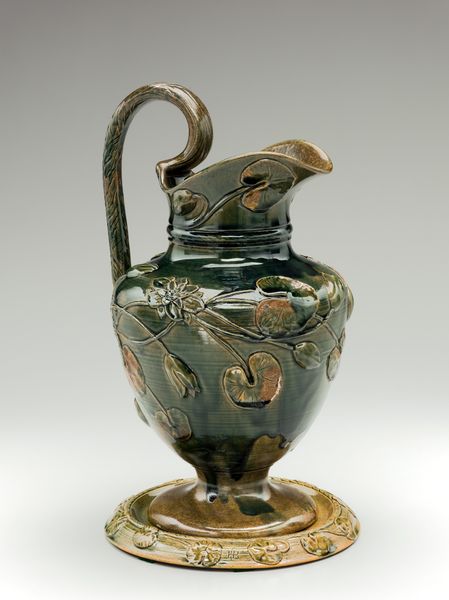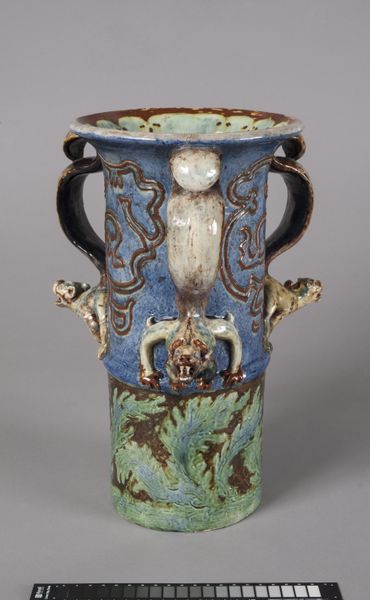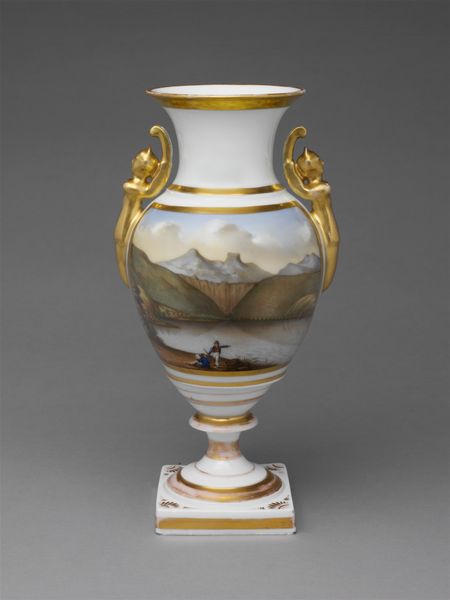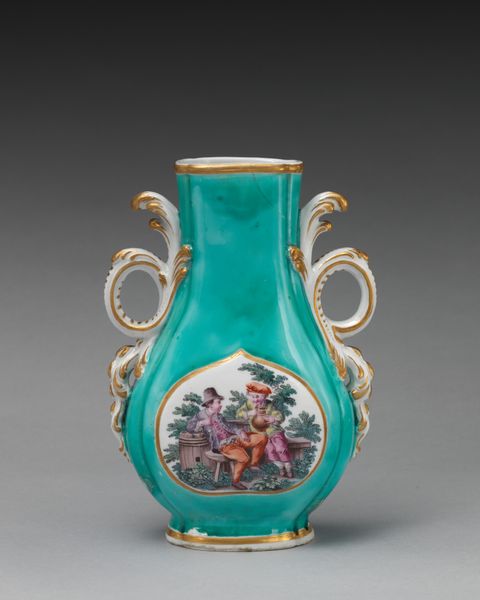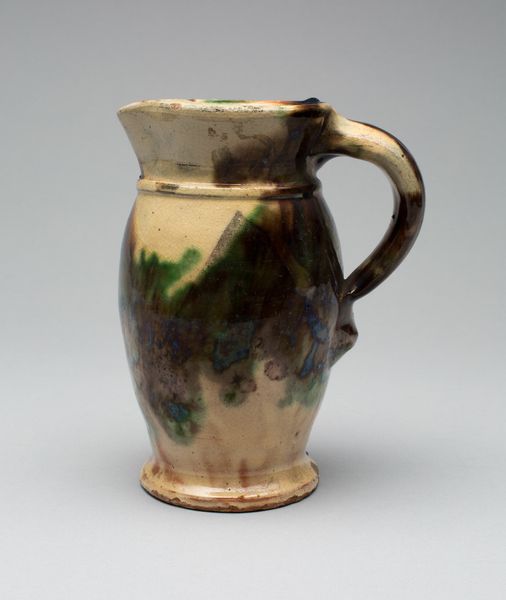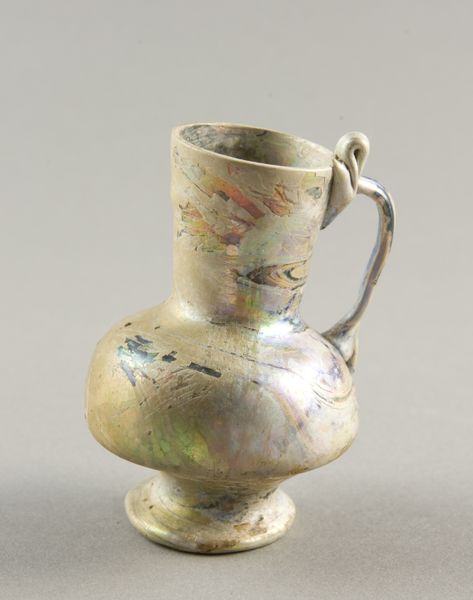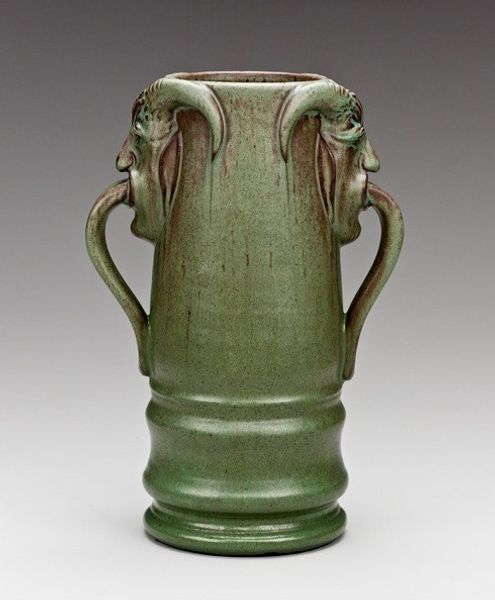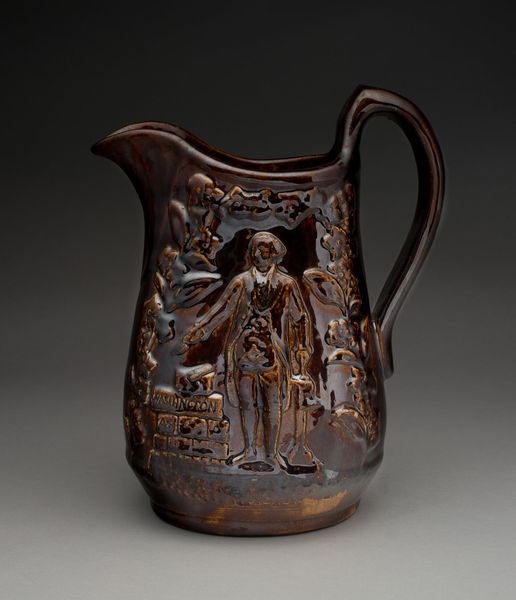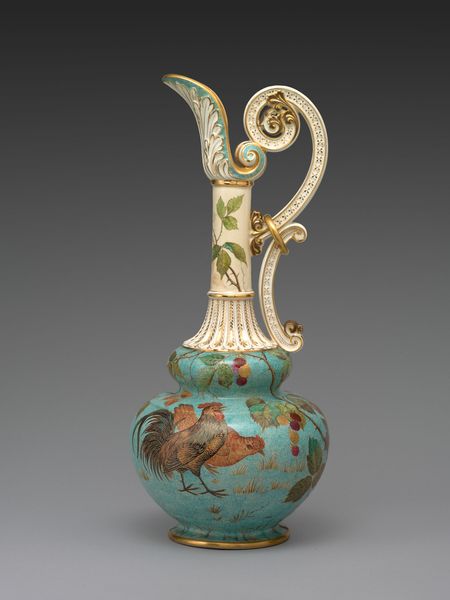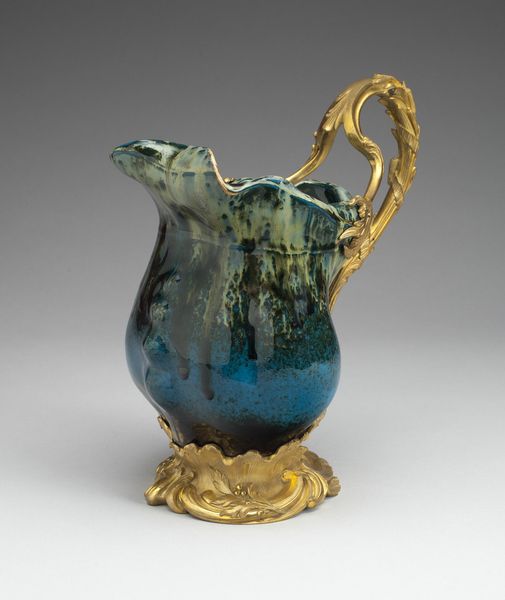
ceramic, sculpture
#
ceramic
#
figuration
#
11_renaissance
#
sculpture
#
decorative-art
Dimensions: Height: 21.6 cm (8 1/2 in.)
Copyright: Public Domain
Curator: Standing before us is a remarkable piece of Renaissance-era ceramic work, a jug created by Paul Preunig around 1550. It’s titled "Jug with Adam and Eve" and resides here at The Art Institute of Chicago. Editor: My immediate reaction is to the rather cheerful use of color! Despite the serious subject matter, the bright glazes – greens, yellows, blues – lend it a strangely jovial quality. Curator: Exactly. Preunig places this loaded biblical scene on such a quotidian object. He lived in an era undergoing massive theological shifts with the Reformation, using it to perhaps signal how these grand religious themes became deeply entwined with daily life and even domestic settings. Editor: I see it too; almost a sense of subversive domesticity. Using such recognizable and crucial symbolism, you almost domesticate something monumental to rewrite established narratives about women's sin. Who decided what made this decorative and functional art anyway, huh? I bet he drank his wine from it after its production too. Curator: That's a poignant intersection of theory and art history! He's certainly capitalizing on art as accessible symbolism, in my perspective. A far-cry from inaccessible artwork hung in wealthy nobility mansions; Preunig, here, creates accessibility for the lower classes of this era through ceramics as décor and dinnerware. The choice to portray Adam and Eve specifically may be charged in such Reformation eras; a question of gender dynamics are almost certainly at play! Editor: Right? Gender, theological dissension, even decorative taste of the era– Preunig invites a plethora of entry points! It is clear the artist not only capitalized on symbolism, but was sure to use pottery to display figuration in households. This jug is much more complex in materiality and reception than its name indicates, as this item reveals so much about Renaissance society at large. Curator: I agree. What seems, at first glance, as simply a quaint jug quickly unfolds into a vibrant intersection of religious reform and even class! It is decorative art like this which make it impossible to extract ourselves from social contexts, gender norms, and socio-economic conditions which make each artifact more meaningful than its use. Editor: Indeed. Next time you reach for a decorative jug, consider all of that potential narrative contained within.
Comments
No comments
Be the first to comment and join the conversation on the ultimate creative platform.

